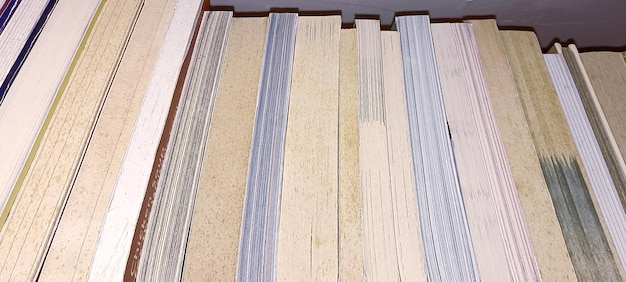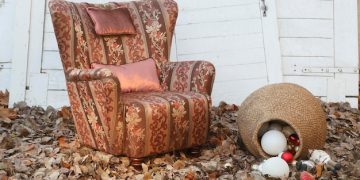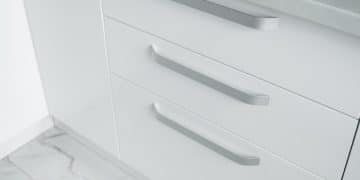Build a Custom Bookshelf for Your Home Office

Want to build a custom bookshelf for your home office? This weekend project guide provides a step-by-step approach for book lovers to create a functional and stylish storage solution tailored to their needs.
Transform your home office with a personalized touch by learning how to build a custom bookshelf for your home office. This weekend project is perfect for book lovers looking to create a unique and functional storage solution.
Planning Your Custom Bookshelf Project
Before diving into the construction phase, thoughtful planning is essential for a successful custom bookshelf. This involves assessing your space, determining your storage needs, and choosing the right materials.
Let’s explore the key steps to effectively plan your custom bookshelf project.
Assessing Your Space and Needs
Start by measuring the area where you plan to install the bookshelf. Consider the height, width, and depth you need. Additionally, think about the types of books and items you’ll be storing to determine shelf spacing.
Choosing the Right Materials
Select materials that match your aesthetic and budget. Popular choices include solid wood (such as pine, oak, or maple), plywood, and MDF. Solid wood offers durability and a classic look, while plywood and MDF are more affordable options.

Here are some material considerations:
- Solid Wood: Durable, aesthetically pleasing, but more expensive.
- Plywood: Affordable, stable, good for large shelves, but edges need finishing.
- MDF: Very smooth, paints well, but not ideal for heavy loads or humid environments.
By carefully assessing your space, storage needs, and material options, you can set the stage for a successful DIY bookshelf project.
Gathering the Necessary Tools and Materials
Before you start building a custom bookshelf for your home office, ensure you have all the required tools and materials. Having everything on hand will streamline the construction process.
Here’s a comprehensive list to help you prepare:
Essential Tools
Having the right tools is crucial for precision and efficiency in building your bookshelf. Here are some must-have tools:
- Measuring Tape: For accurate measurements.
- Circular Saw or Table Saw: For cutting wood to size.
- Drill/Driver: For drilling pilot holes and driving screws.
- Sander: For smoothing rough edges.
Material Checklist
Make a list of all the materials you’ll need based on your design. Common items include:
- Wood boards
- Screws or nails
- Wood glue
- Sandpaper
With all your tools and materials ready, you can proceed with confidence, knowing you’re well-prepared for the construction phase of your custom bookshelf.
Cutting and Preparing the Wood
The next step in building your custom bookshelf is cutting the wood to the proper dimensions. Accurate cuts are essential for a sturdy and visually appealing final product.
Here’s how to approach this crucial stage:
Accurate Measurements and Cuts
Using your measurements from the planning phase, carefully cut each piece of wood. Double-check all dimensions before making any cuts to avoid errors.
Sanding and Finishing
After cutting the wood, smooth the edges and surfaces with sandpaper. Start with a coarse grit and gradually move to finer grits for a smooth finish. This step prepares the wood for staining or painting.

Remember to sand the edges and surfaces thoroughly to achieve a smooth finish. A well-sanded surface ensures better adhesion and a professional look when you apply stain or paint.
Assembling the Bookshelf Frame
With the wood cut and prepared, it’s time to assemble the bookshelf frame. This involves joining the sides, top, and bottom pieces to create the main structure.
Here’s a step-by-step guide:
Joining the Sides, Top, and Bottom
Apply wood glue to the edges of the side pieces where they will connect with the top and bottom. Clamp the pieces together and use screws or nails to secure the joints. Ensure the frame is square by measuring the diagonals; they should be equal.
Reinforcing the Structure
To add extra strength, consider using corner braces or pocket screws. These reinforcements will enhance the stability of the bookshelf, ensuring it can hold a significant amount of weight.
By securely assembling the frame and reinforcing the structure, you’ll create a solid base for your custom bookshelf.
Installing the Shelves
Adding shelves to your bookcase involves several ways. You can use adjustable shelves, or fixed shelves by gluing and screwing them in.
Let see these options:
Fixed Shelves
To install fixed shelves, measure and mark the desired locations on the inside of the bookshelf frame. Apply wood glue to the edges where the shelves will sit, and then secure them with screws or nails. Make sure the shelves are level before the glue dries.
Adjustable Shelves
For adjustable shelves, use shelf pins and drill corresponding holes along the inside of the bookshelf frame. These holes will allow you to easily move the shelves up or down to accommodate different-sized items. Make sure the holes are evenly spaced and aligned for a professional look.
Whether you choose fixed or adjustable shelves, precision and stability are key to creating a functional and attractive bookshelf.
Finishing Touches: Painting, Staining, and Sealing
The final step in creating your custom bookshelf involves adding the finishing touches. This enhances the aesthetic appeal and protects the wood from damage.
Here’s what you need to know:
Painting and Staining
Choose a paint or stain that complements your home office décor. Apply multiple coats for a smooth, even finish, and allow each coat to dry completely before applying the next.
Sealing for Protection
Once the paint or stain is dry, apply a sealant to protect the wood from moisture and scratches. This step will prolong the life of your bookshelf and keep it looking its best for years to come.
By carefully painting, staining, and sealing your custom bookcase, you create a durable beauty that matches your personal style.
| Key Point | Brief Description |
|---|---|
| 📐 Measure Space | Assess area to determine bookshelf dimensions. |
| 🪵 Select Materials | Choose wood like pine or plywood based on budget. |
| 🛠️ Assemble Frame | Glue and screw frame pieces, ensuring squareness. |
| 🎨 Finishing Touches | Paint or stain, then seal bookcase. |
Frequently Asked Questions
▼
Solid wood like oak or pine are great for their durability and classic look. Plywood is also a good affordable alternative. MDF is smooth but doesn’t handle heavy loads well.
▼
Use corner braces as well as pocket screws. Make sure the frame is square before you start drilling the holes by measuring the diagonals. They should be equal.
▼
This depends on your needs. Adjustable shelves offer flexibility. Fixed shelves offer more support.
▼
Use coarse sandpaper and then finer sandpaper on the edges and faces. The surface should be perfect.
▼
Bookshelves can be placed in living areas, bedrooms or hallways. The custom bookcase has the advantage of being made for a specific space. This will help to maximize space.
Conclusion
Building a custom bookshelf for your home office is a rewarding project that enhances both functionality and aesthetics. By following these steps, you can create a personalized storage solution that perfectly fits your needs and adds character to your workspace.





